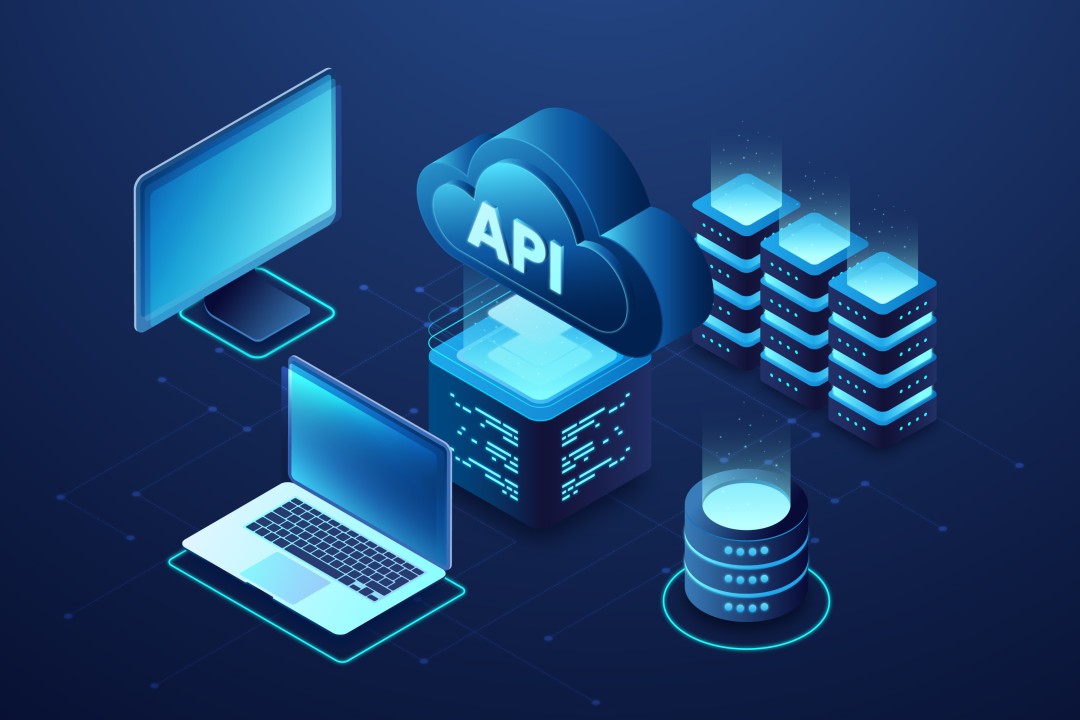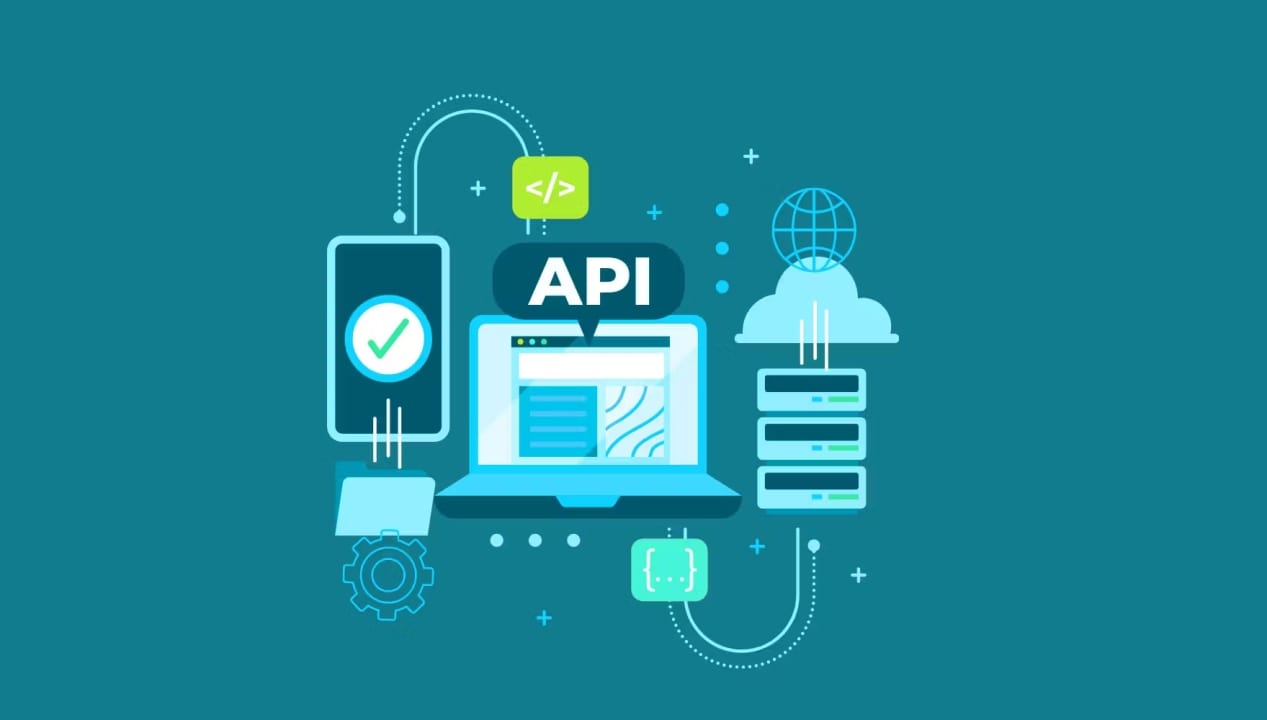API Pentesting Services
API Security Benefits
API Vulnerability Assessment and Penetration Testing (VAPT) provides critical benefits to organizations by identifying and mitigating security vulnerabilities in their APIs. Through comprehensive automated and manual testing, API VAPT helps safeguard sensitive data, prevent unauthorized access, and ensure compliance with industry standards and regulations. By uncovering potential security flaws before they can be exploited, VAPT enhances the overall security posture of APIs, protects against data breaches, and maintains the trust of users and stakeholders. Furthermore, regular API VAPT fosters a proactive security culture, enabling organizations to stay ahead of emerging threats and continuously improve their security measures.
Global Survey of API Security
At Valency Networks, we understand the critical importance of API Vulnerability Assessment and Penetration Testing (VAPT) in safeguarding our clients' digital assets. According to Gartner, by 2022, API abuses became the most frequent attack vector leading to data breaches in enterprise web applications. This alarming trend highlights the necessity for robust API security measures.
Through our comprehensive API VAPT services, we help organizations proactively identify and remediate security vulnerabilities. In 2023, approximately 30% of data breaches involved API endpoints, underscoring the significant risks posed by insecure APIs. Our clients have seen a reduction of up to 85% in their exposure to these risks through regular VAPT, ensuring their APIs remain secure against evolving threats.
The financial impact of API breaches is substantial. In 2022, the average cost of a data breach was USD 4.24 million, with incidents involving APIs often surpassing this average due to the interconnected nature of API-based services. By investing in API VAPT with Valency Networks, organizations can significantly reduce the potential financial damage from security breaches, protecting their bottom line and preserving their reputation.
Compliance is another critical aspect where our API VAPT services prove indispensable. Regulations such as GDPR in Europe and CCPA in California mandate stringent data protection measures. In the European Union alone, non-compliance with GDPR can result in fines up to 4% of annual global turnover or €20 million, whichever is higher. Our regular VAPT services ensure that our clients remain compliant with these regulations, avoiding hefty fines and legal repercussions.
Geographically, the need for API security is evident worldwide. For instance, in North America, 60% of companies experienced a security incident related to an API in the past year. In Asia, cities like Bangalore and Singapore are becoming tech hubs, with a high concentration of start-ups and enterprises relying on APIs. Our services are crucial in these regions to ensure robust API security measures are in place.
Moreover, our API VAPT services foster a culture of continuous security improvement. Companies in cities such as San Francisco and London are leading the way by integrating API security into their DevSecOps practices. This integration has led to a 40% reduction in security incidents over the past two years, ensuring that security is an integral part of the development lifecycle, not just an afterthought.
At Valency Networks, we believe that API VAPT is not just a best practice but a critical necessity for modern enterprises. By identifying vulnerabilities, ensuring compliance, and fostering a proactive security culture, we help our clients protect their data, avoid financial losses, and maintain user trust. The global increase in API usage demands that companies everywhere, from New York to Tokyo, prioritize API security to stay resilient against cyber threats.
Real life cases of API Hacking
At Valency Networks, we recognize that real-life cases of API hacking provide valuable lessons on the importance of robust API security measures. Below are additional notable incidents where API vulnerabilities were exploited, leading to significant consequences and highlighting the urgent need for comprehensive API Vulnerability Assessment and Penetration Testing (VAPT).

GitHub (2020)
In 2020, GitHub experienced a significant security incident when attackers used stolen OAuth tokens to access private repositories. This breach exploited API weaknesses in third-party OAuth applications, leading to unauthorized access to source code and sensitive information. The incident underscores the necessity for vigilant monitoring and securing of third-party integrations through regular API VAPT.
Twitter (2018)
Twitter faced an API-related security issue in 2018, where a bug in their Account Activity API allowed developers to receive Direct Messages meant for other accounts. Although the breach affected less than 1% of users, it highlighted the potential risks associated with API bugs and the importance of thorough testing. Twitter's case demonstrates the need for continuous security assessments to detect and fix API vulnerabilities promptly.
PayPal (2019)
In 2019, a critical vulnerability in PayPal’s API was discovered, which could have allowed attackers to bypass two-factor authentication (2FA) during the login process. This flaw exposed users to significant risk of account takeover. Fortunately, the vulnerability was reported through PayPal’s bug bounty program and promptly fixed. This incident emphasizes the value of VAPT and responsible disclosure programs in maintaining API security.
Verizon (2020)
Verizon’s Visible, a prepaid wireless service, suffered a data breach in 2020 due to a misconfigured API. The breach exposed customer details, including names, addresses, and phone numbers. Attackers exploited an API endpoint that did not properly authenticate requests, demonstrating the critical need for robust authentication mechanisms in API design and regular security assessments.
Clubhouse (2021)
In 2021, the social audio app Clubhouse faced a data scraping issue where an unsecured API allowed unauthorized access to user data. Hackers were able to compile information from millions of user profiles, raising privacy concerns. This case highlights the importance of securing APIs against data scraping and implementing rate limiting and access controls.
Experian (2021)
In 2021, a vulnerability in Experian's API exposed credit scores of potentially hundreds of millions of Americans. The API allowed unauthorized users to access credit scores by simply entering a person's name and mailing address. This severe lapse in security underscores the need for stringent access controls and authentication measures in APIs to protect sensitive financial data.
Tesla (2017)
Tesla’s API was exploited in 2017 when security researchers discovered that they could remotely access the control systems of Tesla vehicles. By exploiting API endpoints with weak authentication mechanisms, the researchers could unlock doors, start the engine, and track the vehicle’s location. Tesla’s case illustrates the critical importance of securing APIs in the IoT and automotive sectors.
These additional real-life cases of API hacking highlight the severe risks associated with insecure APIs, ranging from financial losses and legal repercussions to significant reputational damage. At Valency Networks, we emphasize the importance of rigorous API VAPT practices to identify and mitigate vulnerabilities before they can be exploited. Our comprehensive VAPT services help organizations secure their APIs, protect sensitive data, and maintain compliance with regulatory standards, ensuring resilience against ever-evolving cyber threats.
Why having experienced professionals in API VAPT
At Valency Networks, we believe that experience plays a pivotal role in effective API Vulnerability Assessment and Penetration Testing (VAPT). With the increasing reliance on APIs in today’s digital ecosystem, ensuring their security is more critical than ever. Here’s why having experienced professionals in API VAPT is essential for robust security:
Deep Understanding of API Ecosystems
Experienced VAPT professionals possess a thorough understanding of complex API ecosystems. APIs can vary greatly in design and implementation, and experienced testers can navigate these complexities with ease. They understand the nuances of different API architectures, including REST, SOAP, GraphQL, and others, allowing them to identify subtle vulnerabilities that less experienced testers might overlook.
Expertise in Identifying Vulnerabilities
Seasoned VAPT experts have encountered a wide range of vulnerabilities in various environments. According to a study by Veracode, 83% of tested applications had at least one security flaw, often related to APIs. Experienced professionals bring knowledge of common and obscure vulnerabilities, such as injection flaws, broken authentication, and excessive data exposure. Their expertise enables them to pinpoint weaknesses accurately and efficiently.
Advanced Testing Techniques
Experienced testers are proficient in both automated and manual testing techniques. While automated tools can identify many common vulnerabilities, manual testing is essential for uncovering complex logic flaws and business logic vulnerabilities. Experts know how to combine these methods effectively to achieve comprehensive coverage. For example, the OWASP API Security Top 10 lists issues that require nuanced understanding and advanced testing skills to detect.
Knowledge of Industry Standards and Best Practices
Experienced professionals stay updated with the latest industry standards and best practices. Compliance with standards such as OWASP, ISO 27001, and NIST is crucial for many organizations. Experts ensure that API security measures align with these standards, helping organizations meet regulatory requirements and avoid penalties. This adherence to best practices also enhances the overall security posture of the API.
Real-World Problem Solving
With years of experience, VAPT professionals have faced and resolved numerous real-world security challenges. This hands-on experience is invaluable in developing effective mitigation strategies. For instance, they can provide actionable recommendations tailored to specific environments, ensuring that security measures are both practical and effective.
Adaptability to Emerging Threats
The cyber threat landscape is constantly evolving, with new vulnerabilities and attack vectors emerging regularly. Experienced VAPT professionals are adept at adapting to these changes. They continuously update their knowledge and skills to address the latest threats. For instance, the rise of API-related breaches, such as those affecting large enterprises, highlights the need for ongoing education and adaptability in VAPT practices.
Enhanced Reporting and Communication
Effective communication of findings and recommendations is a critical aspect of VAPT. Experienced professionals excel in creating detailed, clear, and actionable reports. They can articulate complex security issues to both technical and non-technical stakeholders, ensuring that the necessary security measures are understood and implemented effectively.
Proven Track Record
A proven track record of successful VAPT engagements speaks volumes about a professional’s capability. Experienced testers bring a history of helping organizations secure their APIs, which builds trust and confidence. This track record demonstrates their ability to deliver results and protect critical assets.
Case Studies and Success Stories
At Valency Networks, we have numerous case studies and success stories that highlight the impact of experienced API VAPT professionals. For instance, in one case, our team identified and mitigated critical vulnerabilities in a financial services API, preventing potential breaches that could have exposed sensitive customer data. Such experiences showcase the tangible benefits of working with seasoned experts.
Experience is a crucial factor in effective API VAPT. At Valency Networks, our team of seasoned professionals brings deep understanding, advanced techniques, adherence to standards, real-world problem-solving, and proven success to every engagement. By leveraging our expertise, organizations can ensure their APIs are secure, compliant, and resilient against evolving threats. Trusting experienced professionals for API VAPT is not just a best practice—it’s essential for protecting today’s interconnected digital ecosystems.
API Pentesting Case studies
At Valency Networks, we understand the importance of real-world case studies to demonstrate the effectiveness of API Pentesting. Here are some notable examples where our API Pentesting services have helped organizations identify and mitigate vulnerabilities, ensuring the security and integrity of their APIs:
Case Study 1: Financial Services Company

Our team conducted API Pentesting for a leading financial services company with a complex API ecosystem handling sensitive customer data. Through a combination of automated scanning and manual testing, we identified several critical vulnerabilities, including SQL injection and insecure authentication mechanisms. By promptly addressing these issues, the company was able to prevent potential data breaches and maintain compliance with regulatory standards, safeguarding their reputation and customer trust.
Case Study 2: E-commerce Platform
For a global e-commerce platform processing millions of transactions daily, we performed comprehensive API Pentesting to assess the security of their payment processing APIs. Our testing revealed vulnerabilities such as insufficient input validation and inadequate encryption of sensitive data. By implementing our recommendations, including input validation checks and TLS encryption, the platform enhanced the security of their APIs, reducing the risk of payment fraud and protecting customer financial information.
Case Study 3: Healthcare Provider
A healthcare provider entrusted us with conducting API Pentesting for their patient portal API, which facilitated access to medical records and appointment scheduling. Our thorough testing uncovered vulnerabilities such as improper access controls and inadequate session management, posing a significant risk to patient privacy. Through our recommendations, including role-based access controls and session token expiration policies, the provider improved the security of their API, ensuring compliance with HIPAA regulations and protecting patient confidentiality.
Case Study 4: Software as a Service (SaaS) Provider
Our team conducted API Pentesting for a SaaS provider offering collaboration tools to businesses worldwide. During our assessment, we discovered vulnerabilities such as cross-site scripting (XSS) and insecure direct object references (IDOR) in their API endpoints. By implementing our remediation suggestions, including input sanitization and access control checks, the provider strengthened the security of their APIs, mitigating the risk of unauthorized access and data leakage, and enhancing their overall security posture.
Case Study 5: Social Media Platform
For a popular social media platform, we performed API Pentesting to assess the security of their user authentication and data access APIs. Our testing uncovered vulnerabilities such as insufficient OAuth token validation and lack of rate limiting on API requests, potentially exposing user accounts to unauthorized access and data harvesting. By addressing these vulnerabilities based on our recommendations, the platform improved the security of their APIs, protecting user privacy and preventing account compromise.
Case Study 6: Travel Booking Website
Our team conducted API Pentesting for a travel booking website with APIs for flight and hotel reservations. Through our assessment, we identified vulnerabilities such as insufficient input validation and lack of encryption in API communications, posing a risk of sensitive customer data exposure. By implementing our remediation measures, including input validation filters and TLS encryption, the website enhanced the security of their APIs, ensuring the confidentiality and integrity of customer information.
These case studies illustrate the tangible benefits of API Pentesting in identifying and mitigating security vulnerabilities across various industries and use cases. At Valency Networks, our experienced team leverages advanced techniques and methodologies to deliver comprehensive API Pentesting services, helping organizations secure their APIs, protect sensitive data, and maintain compliance with regulatory standards. Trust us to safeguard your APIs against cyber threats and ensure the integrity of your digital assets.
How to choose Top API VAPT Company?
Selecting the right API Vulnerability Assessment and Penetration Testing (VAPT) company is crucial for ensuring the security and integrity of your APIs. Here are key factors to consider when choosing the top API VAPT company:
1. Expertise and Experience
Look for a company with extensive expertise and experience in API security testing. Verify their track record of successfully conducting API VAPT for clients across various industries. Experience matters greatly in identifying and mitigating complex vulnerabilities effectively.
2. Certification and Accreditation
Ensure that the VAPT company holds relevant certifications and accreditations in cybersecurity. Look for certifications such as Certified Information Systems Security Professional (CISSP), Certified Ethical Hacker (CEH), and Offensive Security Certified Professional (OSCP). Accreditation from recognized bodies adds credibility to their services.
3. Methodologies and Tools
Inquire about the methodologies and tools used by the VAPT company for API testing. They should employ a combination of automated scanning and manual testing techniques to provide comprehensive coverage. Ensure that they use industry-standard tools and keep abreast of the latest advancements in API security testing.
4. Compliance and Regulatory Knowledge
Choose a company that demonstrates a deep understanding of regulatory requirements and compliance standards relevant to your industry. They should be well-versed in regulations such as GDPR, HIPAA, PCI-DSS, and others. Compliance expertise ensures that your APIs adhere to legal requirements and industry standards.
5. Customization and Tailored Solutions
Look for a VAPT company that offers customized solutions tailored to your specific API environment and requirements. They should conduct a thorough assessment of your API architecture, business logic, and data flows to identify unique vulnerabilities and provide targeted recommendations for remediation.
6. Transparent Reporting and Communication
Ensure that the VAPT company provides clear and transparent reporting of their findings, along with actionable recommendations for mitigation. Effective communication throughout the testing process is essential for understanding the identified risks and implementing appropriate security measures.
7. Continuous Support and Maintenance
Choose a VAPT company that offers ongoing support and maintenance services to address evolving security threats and vulnerabilities. They should provide regular updates on emerging threats, conduct periodic reassessments of your APIs, and offer remediation assistance as needed.
8. Reputation and References
Research the reputation of the VAPT company by seeking client testimonials, case studies, and references. Look for reviews and feedback from previous clients to gauge their satisfaction with the company’s services. A proven track record of successful engagements is a strong indicator of reliability and quality.
9. Cost-Effectiveness and Value
Evaluate the cost-effectiveness of the VAPT company's services in relation to the value they provide. While cost is important, prioritize quality and effectiveness in securing your APIs. Consider the long-term benefits of investing in robust API security measures to prevent potential data breaches and financial losses.
10. Global Presence and Support
If your organization operates globally, consider partnering with a VAPT company with a global presence and support capabilities. Ensure that they have the resources and expertise to conduct API testing across different geographic locations and comply with regional regulatory requirements.
Choosing the top API VAPT company requires careful consideration of factors such as expertise, certifications, methodologies, compliance knowledge, customization, communication, reputation, cost-effectiveness, and global support. At Valency Networks, we meet these criteria and more, offering comprehensive API VAPT services tailored to your specific needs. Trust us to secure your APIs and safeguard your digital assets against cyber threats.
Why Experience Matters in API VAPT?
Experience plays a pivotal role in ensuring the effectiveness and success of API Vulnerability Assessment and Penetration Testing (VAPT). At Valency Networks, we understand the critical importance of having seasoned professionals conduct API security testing. Here's why experience matters in API VAPT:

1. In-Depth Understanding of API Architecture
Experienced VAPT professionals possess a deep understanding of various API architectures, including RESTful, SOAP, GraphQL, and more. This comprehensive knowledge allows them to navigate the complexities of different API designs and implementations effectively. They can identify potential vulnerabilities specific to each architecture and assess the associated risks accurately.
2. Familiarity with Common and Obscure Vulnerabilities
Seasoned VAPT experts have encountered a wide range of vulnerabilities in their career, ranging from common issues like injection flaws and broken authentication to obscure vulnerabilities unique to APIs. Their extensive experience enables them to recognize patterns, detect subtle vulnerabilities, and anticipate potential attack vectors that less experienced testers might overlook.
3. Proficiency in Advanced Testing Techniques
Experienced professionals are proficient in both automated and manual testing techniques. While automated tools can identify many vulnerabilities, manual testing is essential for uncovering complex logic flaws and business logic vulnerabilities. Seasoned experts know how to combine these methods effectively to achieve comprehensive coverage and provide accurate findings.
4. Knowledge of Industry Standards and Best Practices
Experienced VAPT professionals stay updated with the latest industry standards and best practices in API security. They understand the regulatory requirements governing API security, such as GDPR, HIPAA, PCI-DSS, and others. This knowledge ensures that API security measures align with regulatory standards and industry best practices, minimizing the risk of non-compliance and legal repercussions.
5. Real-World Problem-Solving Skills
With years of experience under their belt, VAPT professionals have faced and resolved numerous real-world security challenges. They have developed effective problem-solving skills and a keen eye for identifying vulnerabilities in diverse environments. This hands-on experience is invaluable in developing practical mitigation strategies tailored to specific organizational needs.
6. Adaptability to Emerging Threats
The cyber threat landscape is constantly evolving, with new vulnerabilities and attack vectors emerging regularly. Experienced VAPT professionals are adept at adapting to these changes. They continuously update their knowledge and skills to address the latest threats, ensuring that their testing methodologies remain effective in detecting emerging vulnerabilities.
7. Enhanced Reporting and Communication
Effective communication of findings and recommendations is a critical aspect of VAPT. Experienced professionals excel in creating detailed, clear, and actionable reports that convey the severity of identified vulnerabilities and provide guidance on remediation. They can articulate complex security issues to both technical and non-technical stakeholders, facilitating informed decision-making.
8. Proven Track Record of Success
A proven track record of successful VAPT engagements is a testament to an expert's capability. Experienced testers bring a history of helping organizations secure their APIs, which builds trust and confidence. Their track record demonstrates their ability to deliver results and protect critical assets effectively.
Experience matters greatly in API VAPT, as it brings deep understanding, advanced testing techniques, knowledge of industry standards, problem-solving skills, adaptability to emerging threats, and a proven track record of success. At Valency Networks, our experienced team of VAPT professionals leverages these qualities to deliver comprehensive API security testing services, ensuring the integrity and resilience of our clients' APIs against cyber threats. Trust us to safeguard your APIs and protect your organization's digital assets effectively.
Why Valency Networks is a Top API VAPT Company?
Valency Networks stands out as a top API Vulnerability Assessment and Penetration Testing (VAPT) company for several compelling reasons:
1. Expertise and Experience
With years of experience in cybersecurity and a team of seasoned professionals, Valency Networks brings unparalleled expertise to API VAPT. Our experts have conducted numerous successful API security assessments across various industries, gaining insights into the unique challenges and vulnerabilities associated with API architectures.

2. Comprehensive Methodologies
We employ comprehensive methodologies that combine automated scanning with manual testing techniques to provide thorough coverage of API security vulnerabilities. Our approach ensures that no stone is left unturned in identifying potential risks, allowing us to deliver accurate findings and actionable recommendations to our clients.
3. Compliance and Regulatory Knowledge
Valency Networks has a deep understanding of regulatory requirements and compliance standards relevant to API security, including GDPR, HIPAA, PCI-DSS, and others. We ensure that our API VAPT services align with these standards, helping our clients maintain compliance and avoid legal repercussions.
4. Tailored Solutions
We understand that every organization has unique API environments and security requirements. That's why we offer customized solutions tailored to each client's specific needs. Our experts conduct a thorough assessment of your API architecture and business logic, providing targeted recommendations for mitigating vulnerabilities and enhancing security.
5. Transparent Reporting and Communication
At Valency Networks, we prioritize clear and transparent communication throughout the API VAPT process. We provide detailed reports that outline our findings, including the severity of identified vulnerabilities and recommendations for remediation. Our experts are readily available to address any questions or concerns and guide our clients through the remediation process.
6. Proven Track Record
We have a proven track record of success in helping organizations secure their APIs and protect their digital assets. Our satisfied clients attest to the effectiveness of our services, with many returning to us for ongoing API security support. Our track record speaks volumes about our commitment to delivering results and exceeding client expectations.
7. Continuous Support and Maintenance
Valency Networks offers ongoing support and maintenance services to ensure the long-term security of our clients' APIs. We provide regular updates on emerging threats, conduct periodic reassessments of API security posture, and offer remediation assistance as needed. Our commitment to continuous improvement ensures that our clients stay ahead of evolving cyber threats.
Valency Networks is a top API VAPT company due to our expertise, comprehensive methodologies, compliance knowledge, tailored solutions, transparent communication, proven track record, and continuous support. Trust us to secure your APIs and protect your organization's digital assets effectively against cyber threats.


